

result text
➤Hec. Total land
Direct jobs
Panel production capacity
LUMIN® quality sustainable wood products are made from plantation-grown pine and eucalyptus trees. Lumin plywood is lightweight, flat and strong. We offer a variety of grades with a pine or eucalyptus face (with these layup options: Combi panels, 100% Pine, or 100% Eucalyptus). From plywood to logs, Lumin is the ideal choice for builders and manufacturers looking for beautiful and environmentally-friendly products.
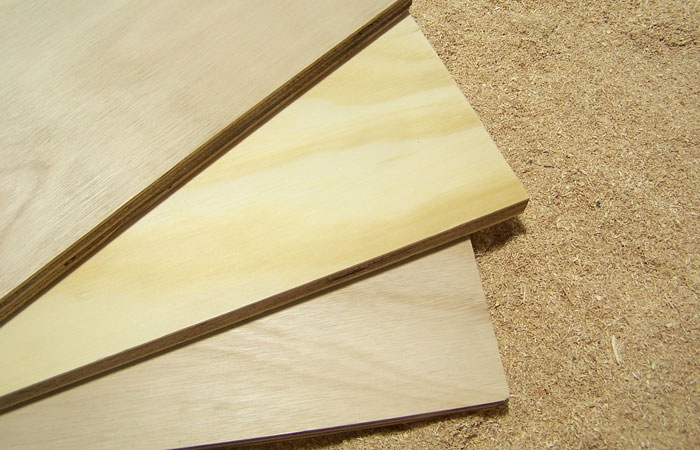

PLANTING

HARVESTING

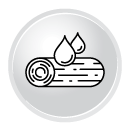
CONDITIONING
DEBARKING

PEELING
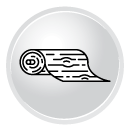
DRYING
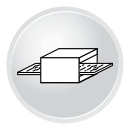
GLUING

PRESSING
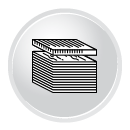
FINISHING OPERATIONS
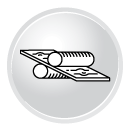
PACKAGING

TRANSPORT

✕

Plants are obtained through vegetative propagation (reproductive cloning). Seed plants can also be produced. We seek the highest quality and safety standards
when performing the task.
Extensive work is undertaken alongside the R&D department to attain genetic
materials that adequately meet industry demand.
✕

The forest planting stage begins when the “seedlings” arrive from the nursery, ready to be planted in the field.
The land is prepared and conditioned in advance. Soil tilling, ant control and weed
control are carried out. Thinning is used to maximize individual growth along with pruning to obtain quality wood.
In Uruguay, the first commercial thinning is done at 11 or 12 years, both for pine
and eucalyptus trees.
The majority are used for the panel board and solid wood industry, and a smaller
percentage are sold for cellulose and biomass.
Transport, reception and storage of rolls for industrial production
The eucalyptus or pine rolls for industrial production are transported from the forest plantations to the plant using 6-axle trucks or, instead, truck/trailer
combinations, coupled with 5-axles in total, both fitted with railings and a gross unit
weight limit for each set of 45 tons.
In both cases, the average net unit load is 28 tons of wood equal to around 30 m³
of pine and eucalyptus rolls.
Upon arrival at the plant, trucks are weighed and moved to the raw material reception
and temporary storage zone. Once there, the rolls are unloaded, transported and
deposited using Caterpillar loaders, classified by species, length and arrival date at
the plant.
While the rolls are being stowed before debarking, they are kept moist using a sprinkler or spray system to prevent the appearance of cracks in eucalyptus trunks and spots on pine trunks.
The roll moistening system is comprised of a water pool for sprinkling, pumps and a pipe
system to feed the sprinklers. The objective is to minimize well water use to restore
the pool level. For such purpose, the excess maceration process water is sent by
pipes to this pool.
✕

The aim of this process is to remove the external trunk bark without damaging the roll wood.
For this, using Front-end loaders with grapple jaws are used to remove the rolls from the moist storage pile and are then fed into a ring debarker before being reclassified by size and diameter, before moving on to the next stage.
The bark separated during this process is fed, a mechanical transporters is used to feed the separated bark into a shredder for use as solid fuel for steam generation
✕

Debarked rolls are placed in vaulted chambers in parallel lines for conditioning meant to soften the roll fibers for subsequent processing.
The purpose of this operation is to soften the roll fibers and make
subsequent operations easier.
The warm water sprinkled over the rolls heats them up and falls between them at
the same time, in a cascade system, until reaching the chamber floor, sloped
towards the rear section thereof.
Tipping saws
The rolls are removed from the maceration vaults and fed into a saw cutting system to obtain uniform logs (2.63 meters each) called trunks. This operation is performed by two production lines, each fitted with 3 circular saws.
The resulting timber produced from roll cutting is shredded in chippers and taken to the wood waste deposit for use as a solid fuel for steam and electrical energy generation.
Any trunks that fail to meet the production process requirements can be chipped later and turned into fuel or ultimately rejected and returned to the supplier.
✕

Squared trunks from the tipping saws are accumulated collection tables and raised by a step feeder that transports trunks to a lathe XY loader. The XY loader is fitted with several laser sensors that recognize the shape of each trunk and rotate them 360° on the fixing points.
The fixing points are then positioned so that when the trunk is placed on the lathe’s rotation points, it is fully prepared for peeling. When the blade reaches the rotating trunk, it starts to peel a continuous, thin sheet of wood with the desired, calibrated thickness.
After the trunks have been peeled, their gnarled, central and cylindrical cores are used to obtain different sub-products, including strips for the sheets (blocks) and packaging the laminated wood panel boards obtained, pallets, or chips for use as fuel for steam generation.”
Clipper and stacker
The continuous wood sheet from the lathe (veneer) is scanned to detect faults, knots or breaks. The system is comprised of a camera, a light source (which allows on-going analysis of the veneer panel that passes underneath the instrument), a rotary clipper and a control panel to move the clipper and cut the continuous veneer sheet based on the results of the scan.
When the scanner detects a defect in the panel, it instructs the clipper to make a cut before and after the fault, producing smaller-sized sheets. Smaller sized pieces are taken to a manual classification table, where operators classify pieces by quality and width. These sheets and manually peeled strips are automatically transported to the wet veneers deposit area.
✕

The veneer sheets, whether cut fully, in half or at random, enter the drying process at the same time and are indirectly heated to lower moisture content. This generally reduces moisture content to a fairly wide range between 4% and 15%. The horizontal sheet circulates air in parallel to the sheets by sending hot air via high-speed jets to the sheet’s surface, creating more turbulent air flow.
Once dry, the sheets are classified by moisture content before being moved to the dry sheet storage area. If the desired moisture is not obtained, they are returned to the one of the dryers at a lower temperature to complete the required drying process.
✕

The dry wood sheets are moved to an automatic panel board assembly line, with an extrusion glue gun and spreader. This equipment is intended to spread and consistently apply glue.
The glued core sheets are assembled with the sheets that make up the outer faces to create the wood panel boards. The assembly of laminated wood panel boards must be symmetrical to prevent excessive warping.
Glue
The phenol-formaldehyde required for the process is supplied by an external
provider ready to use. This means the panels produced are externally resistant
and comply with the product certifications mentioned on the website.
✕

The glued and assembled sheet packages are loaded into the installed Pre-Presses.
Each Pre-Press applies enough pressure to turn multiple sheets into panels that can be separated, handled and later positioned individually in the Hot Press.
Each Hot Press applies pressure and heat to the panels to forge the glue resin and weld each panel’s sheets.
The Hot Press expands the resin to form a thin layer over each wooden strip. The pressing time and temperature varies depending on the type of wood and board thickness.
✕

Finishing operations consist of squaring, fixing, sanding and classifying. The laminated wood panels finally undergo a finishing process whereby the edges are trimmed and the two outer faces are sanded for a smooth finish.
The type of finish depends on the desired product in terms of meeting the demanding market’s requirements. After the panels have been adjusted in size, they are subject to a blow detector test to check the perfect gluing of each panel layer. A certified operator then inspects and defines (classifies) the level of each panel.
The panels, ranked by level of quality, are then automatically organized into piles. Due to the quality inspection, some panels are sent to a repair line (Poly Patch), where their faults are corrected. The panels then continue the finishing process, moving on to the Sanding sector, where the panel faces are sanded until attaining the desired finish. The work stations for all finishing operations have extraction systems for the fine dust generated to ensure a satisfactory working environment. This dust is then used as bunker fuel
✕

After the final process, the panel board packages are prepared in different ways for storage and subsequent shipment, depending on the destination, customer and their level of quality.
Packages may be processed with different types of packaging: stretch film, painting the sides of the package in the paint booth, or strapped with plastic straps, depending on the level of quality, destination or customer.
✕

The panel board or sheet packages may be shipped from the Plant by rail or truck, also depending on the market, customer or destination.
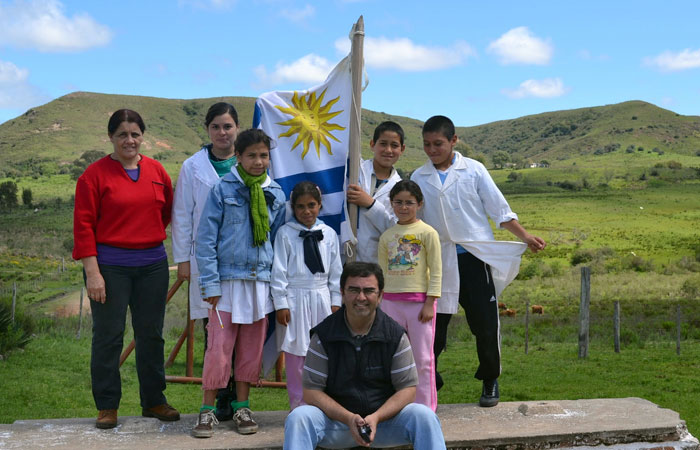
Through sustainable forest management and corporate social responsibility initiatives, LUMIN meets a wide variety of the local community’s needs while focusing on the preservation of a healthy environment.
The Director of Unit No. 21 of Artigas, Luis Viera, received a visit from Mara Pisano Rodriguez, HR Manager of LUMIN, located in the department of Tacuarembó. The occasion was marked by a detailed tour of the facilities of the future Unit 21 Detention Center.For the fourth consecutive year, LUMIN ...
Gender Equality Today for a Sustainable Tomorrow.This March 8th, we reaffirm our commitment to gender equality.We are advancing gender-focused education in communities through training workshops, along with actions and awareness campaigns on women's health and well-being.We continue our support of the Rainbow Early Childhood Center, wich fosters shared responsability in ...

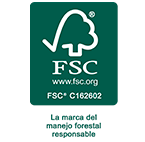


With an expansive range of betting limits, 1Win Casino 1winuganda.com caters to both casual players and high rollers, ensuring everyone can enjoy the thrill of gambling according to their comfort level. This inclusivity makes the casino a preferred destination for a diverse audience.